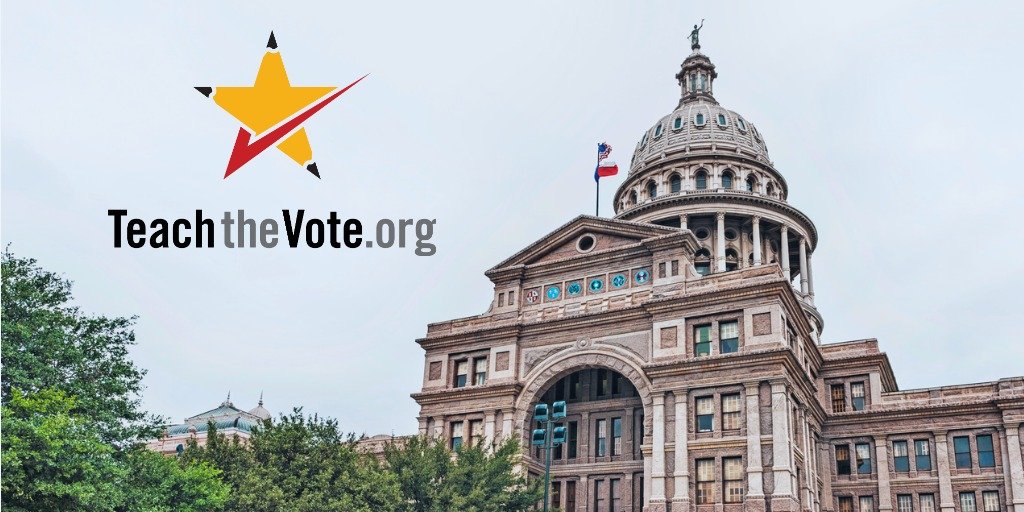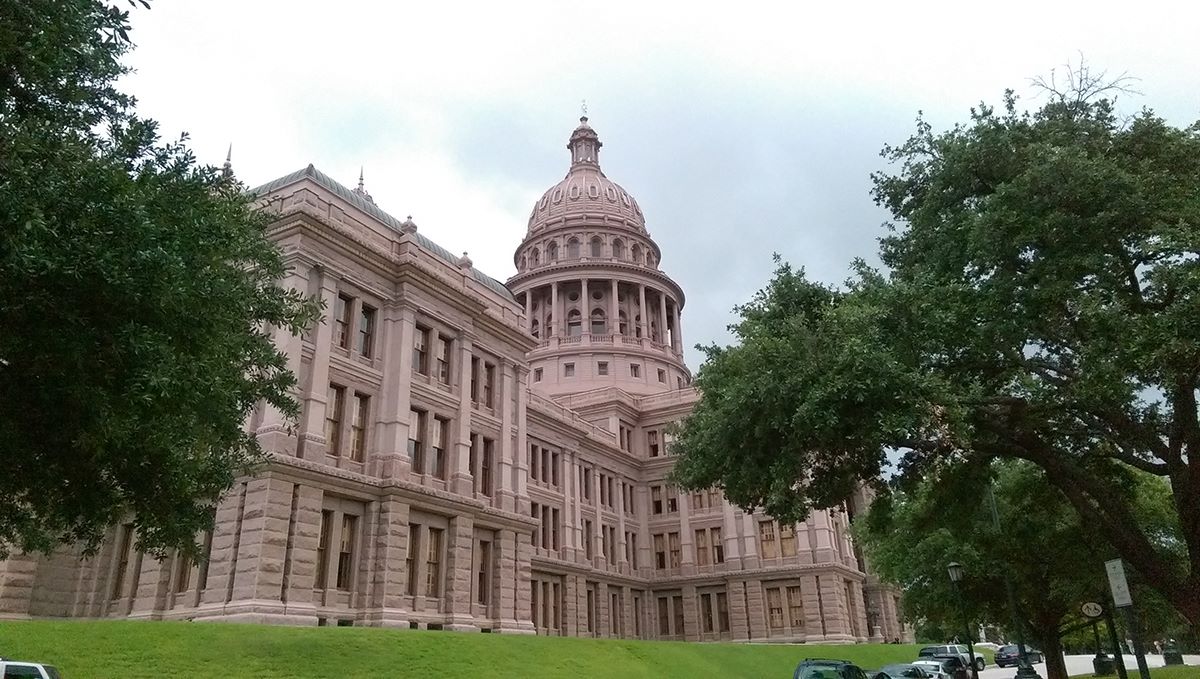Does Gov. Abbott want to spend more on schools?

School Finance Texas Legislature
Date Posted: 8/31/2018 | Author: Mark Wiggins
Election season is truly magical.
There’s just something about the seething mercury, the colorful proliferation of yard signs, and the specter of an existential showdown that awakens a – dare we call it – miraculous clarity in political combatants seeking votes.
When else can one witness folks who’ve spent the past 20 months fighting in bitter opposition to a particular set of constituents suddenly discover a deep love for the values they hold? The Lord works in mysterious ways.
 It’s no surprise that we’re now hearing support for improving the school finance system from unexpected corners. To a certain degree, it’s positive evidence that educators are being heard, and that the powers-that-be realize that there is more to gain by working with the education community than working to dismantle it.
It’s no surprise that we’re now hearing support for improving the school finance system from unexpected corners. To a certain degree, it’s positive evidence that educators are being heard, and that the powers-that-be realize that there is more to gain by working with the education community than working to dismantle it.
It’s no surprise that we’re now hearing support for improving the school finance system from unexpected corners. To a certain degree, it’s positive evidence that educators are being heard, and that the powers-that-be realize that there is more to gain by working with the education community than working to dismantle it.
That doesn’t mean that efforts to dismantle it behind the scenes will stop. In politics as in statistics, things tend to revert toward the mean. The governing happens long after the polls close. Nonetheless, election season opens a brief window of opportunity to use our seat at the table to advance the conversation.
Let’s apply this lens to the latest Dallas Morning News opinion column by Gov. Greg Abbott (R-Texas), with the promising headline, “Texas must boost school funding.” The key passage summarizing Gov. Abbott’s message is as follows:
“We need to pay our best teachers more, reward teachers and districts for student growth, prioritize spending in the classroom and reduce the burden of skyrocketing property taxes. I’ll add up front that I believe the state will have to provide more funding.”
That last line seems to offer an acknowledgment of what we in the education committee have known for some time, but which many in the Capitol have resisted mightily.
The problem, of course, is that many of the people who have opposed investing more state dollars in public education have falsely argued that the state is already increasing education spending year over year. They point to raw dollars going back to a low-water point in 2006 in order to obscure the reality of the deliberate and steady erosion of state support for local schools. Troublingly, Gov. Abbott takes this very tack in writing that “overall education spending in Texas has increased by more than 50 percent since 2006, and the state is contributing 29 percent more education funding per student in that time period.”
Let’s look at that claim.
The numbers in the latter half of that statement come from a Texas Education Agency (TEA) presentation before the Texas Commission on Public School Finance. The headline of the slide below seems to confirm the governor’s assertion, but look at the orange line indicating funding adjusted for inflation. It clearly shows that in terms of purchasing power, total per-student funding has risen only slightly since 2006, and is roughly equal to per-student funding in 2008. (Click the image to view a larger version.)
What’s perhaps more telling is the blue bar indicating how much funding the state has contributed. I’ve added the red brackets and red horizontal line to make the minute changes easier to see. You can tell that the raw dollar amount the state has contributed has actually decreased slightly since 2008 – and that’s not even adjusted for inflation.
To get to the inflation-adjusted number, we look at the Legislative Budget Board’s (LBB) Fiscal Size-up for the 2016-2017 biennium. In the chart below, we can see how spending from local property tax revenue (circled in green) has increased, while state aid (circled in blue) has changed little from 2008 levels. In total constant dollars adjusted for inflation (near the red arrow), we see that total funding has in fact decreased.
The governor also wrongly suggests that funding is not making it into classrooms. According to the TEA’s 2016-17 Pocket Edition statistics, districts only spend an average of 3.1 percent on administrative costs.
To his credit, the governor advocates that increases in funding should go to teachers. No disagreement there. His idea is to implement a system in which top-performing teachers can earn significantly higher pay by teaching in areas facing the most need – similar to the “ACE” system tested in Dallas ISD. It’s a conversation that’s worth having, provided that educators are involved in the process and that the system doesn’t rely primarily on student test results to identify those “top-performing” teachers.
Governor Abbott also suggests moving away from a per-pupil funding model and, implicitly, toward a more outcomes-based approach. This is problematic for a variety of reasons, not the least of which is identifying which metrics with which to measure student performance and the threat of schools faced with the most significant socioeconomic challenges receiving even less support.
Finally, the governor writes that school finance reform must be accompanied by reforms in property taxes. It’s true the two are inextricably intertwined.
Increasing the state’s share of public education funding is the surest way to provide relief in property taxes. The governor proposes forcing taxing entities to lower their rates as appraisals go up, with the state presumably stepping in to make school districts whole. That’s a lot to presume, especially to do so in perpetuity.
Districts could hardly be blamed for wanting to see the legislature commit money up front before committing to voluntarily lower their tax rates – and it will take a sizable appropriation to shift the burden back toward the state in a way that will be meaningful to local property owners. School board members are politicians too, and they don’t want to be blamed for high taxes any more than their counterparts in Austin.
So what does it all mean? Does the governor’s column signify a dramatic reversal of his stance on public education, and school finance in particular? Does it mean he’s ready to stop attacking educators through anti-teacher payroll deduction bills and focus on improving teacher pay instead?
At a minimum, the governor is now talking about public education as an important priority, and that’s a good thing. The onus is on us to engage respectfully yet forcefully, and to shape the conversation, to the extent we can, by correcting inaccuracies and providing meaningful input. At best, we hope the governor will listen to educators and incorporate our feedback, even after the elections are over.
Of course, just as election season begins in the frantic furnace of summer, it ends in darkness on a winter night. When the legislature returns in January, we’ll all be faced with cold reality.
CONVERSATION
RECOMMENDED FOR YOU

04/12/2024
Teach the Vote’s Week in Review: April 12, 2024
SBOE criticizes TEA staff handling of edTPA rulemaking; plus, don’t miss next week’s hearing on the GPO and WEP.

04/12/2024
Taking a deeper look at the commissioner’s comments on teacher preparation
ATPE Lobbyist Tricia Cave examines statements made by TEA Commissioner Mike Morath this week about teacher preparation, employment, and hiring practices.

04/12/2024
Texas Senate interim charges for 2024 released
Lt. Gov. Dan Patrick released his list of topics for senators to explore and discuss ahead of the 2025 legislative session.



